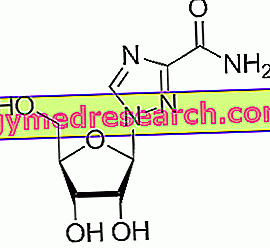Watch the video
X Watch the video on youtubeWhat's this ?
Barley coffee (known in English as coffee of barley ), sometimes simply abbreviated to "Orzo", is a typical Italian hot drink.

Barley coffee can be prepared in the traditional way, using espresso coffee machines or coffee pots, or by diluting the extract in granules or powder (soluble barley, composed of a mixture of cereals) in boiling water.
Both for the espresso coffee machine and for the moka, single portions of barley coffee are available packed in fibrous fabric filters. Moreover, there is a special coffee maker dedicated exclusively to this drink. In fact, the barley coffee obtained from traditional coffee machines is rather faded and ugly in appearance; on the contrary, using automatic machines or specific coffee makers, even barley coffee uses a pleasant surface foam.
In Italy, barley coffee can be found in any business (bars, restaurants) and in hot drink vending machines.
From before decaffeinated coffee was introduced, this drink was already considered the main alternative for those who must abstain from caffeine consumption, therefore: children, heart patients, those suffering from anxiety disorders, those who are in treatment with certain drugs, pregnant women, nurses etc.
Nutritional Features
Trying to evaluate what the degree of perfusion of the various molecules is from dust to water is an enterprise which is, to say the least, impossible, which is why we will limit ourselves to describing the nutritional composition of the drink obtained with soluble barley.
Barley coffee is a non-alcoholic beverage that should not provide a significant amount of energy. In fact, to obtain a cup of barley coffee it is sufficient to dilute 10-15g of soluble powder in 200-250ml of water, obtaining a liquid having about 20kcal per 100ml.
| Nutritional composition for 100g of Barley coffee | ||||||||||||||||||||||||||||||||||||||||||||||||||||||||||||||||||||||||||||||||||||||||||||||||||
 | ||||||||||||||||||||||||||||||||||||||||||||||||||||||||||||||||||||||||||||||||||||||||||||||||||
Nutritional values (per 100 g of edible portion) | ||||||||||||||||||||||||||||||||||||||||||||||||||||||||||||||||||||||||||||||||||||||||||||||||||
| ||||||||||||||||||||||||||||||||||||||||||||||||||||||||||||||||||||||||||||||||||||||||||||||||||
The calories of the drink are mainly supplied by complex carbohydrates, while proteins and lipids are not very relevant. The fibers are insignificant and cholesterol is absent.
As far as vitamins are concerned, the only noteworthy contribution is that of niacin; with regard to mineral salts, on the other hand, discrete concentrations of potassium and phosphorus are evident
Barley coffee is considered a harmless beverage because it is caffeine free. However, remember that any roasted food contains a considerable dose of acrylamide, a catabolite toxic to the body. Obviously, even in this case it is the "dose that makes the poison"; a cup of barley coffee a day shouldn't create any kind of problem.
Barley coffee lends itself to any diet, except for coffee against celiac disease; in fact, barley is a cereal that contains gluten, therefore it must not be taken by those suffering from this intolerance.
For the rest, the drink does not create complications in the case of overweight, metabolic diseases, lactose intolerance, vegetarianism, veganism or religious diets.
Historical outline and dissemination
During the Second World War and even later, barley coffee and chicory coffee became the most popular drinks in Europe. Both were used as a coffee substitute, at the time expensive and difficult to find.
In European countries that have experienced a long post-war period (like Spain), barley coffee has taken on the negative image of an economic surrogate, an index of poverty, which has remained well fixed in the mind of the population. For this reason, from dozens of producers scattered throughout the Spanish territory in 1950, today only two remain.
In Italy, on the other hand, barley coffee has remained a very popular drink and there are currently dozens of companies in operation.
Abroad, thanks to its reputation as a "healthy drink" (perhaps due to the absence of caffeine, which however only makes it harmless), the spread of barley coffee is constantly increasing (especially in Germany).
In Latin America there is a variety called "Cafe de cebada", literally barley coffee in Spanish, although it looks much more like tea than coffee.



